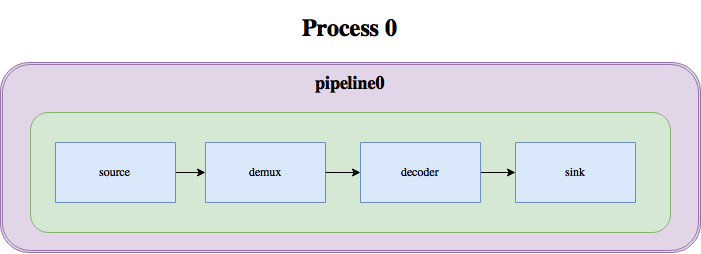By George Kiagiadakis, Senior Software Engineer at Collabora.
Earlier this year I worked on a certain GStreamer plugin that is called “ipcpipeline”. This plugin provides elements that make it possible to interconnect GStreamer pipelines that run in different processes. In this blog post I am going to explain how this plugin works and the reason why you might want to use it in your application.
Why ipcpipeline?
In GStreamer, pipelines are meant to be built and run inside a single process. Normally one wouldn’t even think about involving multiple processes for a single pipeline. You can (and should) involve multiple threads, of course, which is easily done using the queue element, in order to do parallel processing. But since you can involve multiple threads, why would you want to involve multiple processes as well?
Splitting part of a pipeline to a different process is useful when there is one or more elements that need to be isolated for security reasons. Imagine the case where you have an application that uses a hardware video decoder and therefore has device access privileges. Also imagine that in the same pipeline you have elements that download and parse video content directly from a network server, like most Video On Demand applications would do. Although I don’t mean to say that GStreamer is not secure, it can be a good idea to think ahead and make it as hard as possible for an attacker to take advantage of potential security flaws. In theory, maybe someone could exploit a bug in the container parser by sending it crafted data from a fake server and then take control of other things by exploiting those device access privileges, or cause a system crash. ipcpipeline could help to prevent that.
How does it work?
In the – oversimplified – diagram below we can see how the media pipeline in a video player would look like with GStreamer:

With ipcpipeline, this pipeline can be split into two processes, like this:

As you can see, the split mainly involves 2 elements: ipcpipelinesink, which serves as the sink for the first pipeline, and ipcpipelinesrc, which serves as the source for the second pipeline. These two elements internally talk to each other through a unix pipe or socket, transferring buffers, events, queries and messages over this socket, thus linking the two pipelines together.
This mechanism doesn’t look very special, though. You might be wondering at this point, what is the difference between using ipcpipeline and some other existing mechanism like a pair of fdsink/fdsrc or udpsink/udpsrc or RTP? What is special about these elements is that the two pipelines behave as if they were a single pipeline, with the elements of the second one being part of a GstBin in the first one:

Continue reading on Collabora’s blog.





